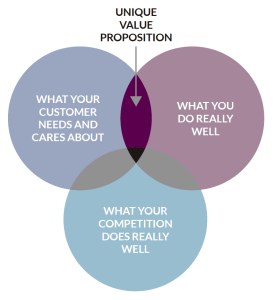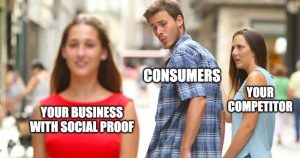
02 Jun How to Write Good Copy that Sells
What is Copywriting?
Copywriting involves writing persuasive materials that compel people to take some form of action, such as make a purchase, click on a link, donate to a cause, or schedule an appointment.
It’s not easy to get the results you want from advertising your products and services. Most of the time, this happens because the words on your website, in your marketing emails, or on your social media platforms are ineffective or poorly written.
Make use of copywriting. It’s a way of writing that is used to increase sales and conversions.
3 Rules of Copywriting
- People don’t like the idea of being sold.
- People buy things because of emotional reasons rather than rational ones.
- Once sold, people must satisfy their emotional decisions with logic.
How to Write a Copy Like a Pro
Step 1: Know your audience
Before you start writing, you should figure out who you’re writing for. Your marketing strategy is influenced by who you’re selling to, what they want to buy, and what will persuade them to buy. It’s all about the client, not your business.
Step 2: Write in an appropriate tone
When you write, it’s critical that the words you use match the mood you want to convey. You add significantly more context to your writing when you use appropriate tone. Your writing style reveals whether you are entertaining, solemn, eccentric, or ultra-professional.
Step 3: Stress your UVP (Unique Value Proposition)
A unique value proposition is a statement that clearly states how your offer will benefit your target market, how it will meet their needs and solve their problems, and how it makes you different from your competitors.
Your UVP should demonstrate why you are the best fit for your target market. You don’t need to be proficient in all areas. Instead of dwelling on your accomplishments, consider what truly makes you unique.
Step 4: Use copywriting to eliminate pain points
Customers don’t shop for a brand or item because it’s all rainbows and sunshine. They’re looking for answers to a problem. We call these issues the pain points, which will be the focus of your copy.
6 Main Pain Points Customers Face by Copywriter Rose Crompton
- Financial
- Risk and Trust
- Ease and Convenience
- Productivity and Time
- Processes and Journey
- Communication and Support
Step 5: Take advantage of social proof
Social proof is a great marketing tool. Ideally, we would like the same benefits as someone who has already experienced the brand or service. Advice from other customers is more valuable than data from brands, such as information from relatives or even idols. Decide what pain points and advantages to highlight based on social proof.
Step 6: Remove all the nonsense
While writing a copy, every word must serve a purpose. If it fails to educate, emphasize a benefit, or create a connection, it should be removed.
You should avoid popular terms and phrases in your copy, such as that, in order to, very, just, even, really, so, etc. Sometimes these words are necessary, but consider whether they truly add value or if they are merely a filler.
Step 7: Perform further evaluations
Examine only a few variations of your copy. Test one or two adjustments to each element to see which generates the most conversions. Select the most successful version and test it again. Repeat as necessary.
Copywriting Tips That You Need to Keep in Mind
Start with a compelling value proposition
According to Nielsen Norman Group research, you only have a few seconds to capture a visitor’s interest before they abandon your page. Be up-front about the benefits you’re offering. Make your offer as concise as possible.
The goal of the first line is to entice your audience to read the next one, and so on. If your opening statement does not hook your audience, you’re doomed.
Avoids jargons and hyperbole
In order to convey what makes their product, service, or organization truly unique, authors frequently use jargon or hyperbole. However, good copywriting doesn’t need embellishments. Great copywriting should be genuine and humane.
Jump to the good stuff
The first thing you should do is to talk about how the product meets a need or desire. You must clearly explain how your product works. Describe how acquiring your goods would make your customers’ lives better.
Get into the features
Now that your customers are aware of what you are offering and its benefits, it is time to lay out the features of your product in a concise and clear manner. Keep it short and sweet, but include a few crucial elements that prove why it is the best.
Powerful CTA (Call to Action)
This will be your final step after discussing benefits and features. A CTA should be simple and straightforward. It doesn’t have to be complicated.
Now You Can Try Your Hands at Copywriting
Copywriting, like any other professional skill, takes time to master. Some copywriters spend a great deal of time honing their skills, working with a variety of firms and clients, and writing for different audiences.
To create an effective digital marketing plan, you must be able to write compelling copy. No matter how good your products or brand are, if you can’t write persuasive content, they won’t sell.







